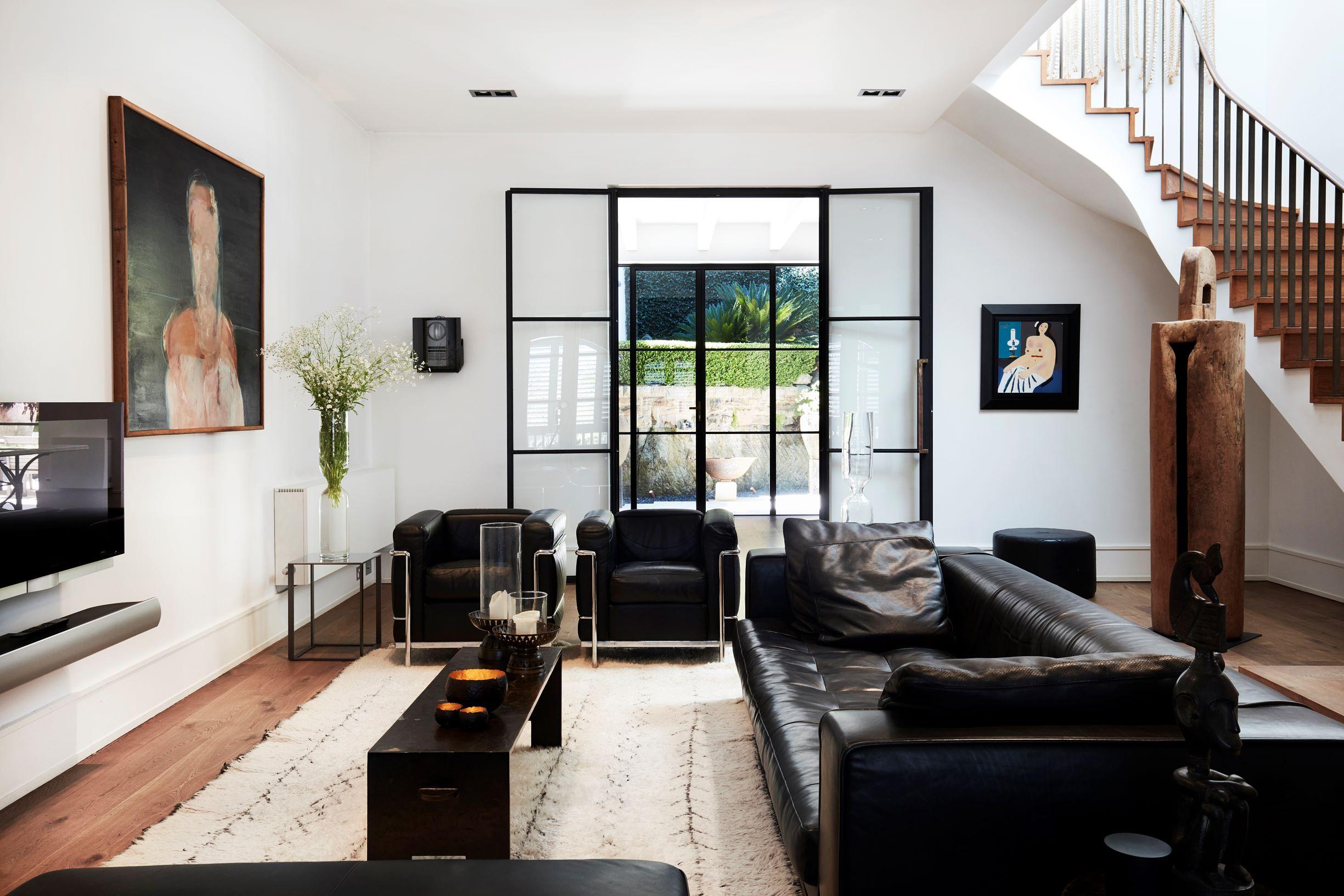REAL ESTATE OUTLOOK FOR FY 2019/2020: WILL THE NEW FINANCIAL YEAR MEAN A NEW PROPERTY MARKET FOR THE LOWER NORTH SHORE?
—
As we move into the new financial year, we’re seeing a new set of market conditions emerge in the property market on Sydney’s lower north shore. In this article, we explore what’s happening now, how we expect the remainder of this year to play out, and what it means for you if you’re looking to buy or sell in our part of the world.
New signs of confidence hit the market
Finally, we’re seeing some relief for Sydney property prices as a whole. It was well documented that Financial Year 2019 was not a great one for Sydney real estate generally, with the median dwelling price declining around 8 per cent over the 12 month period, according to CoreLogic. But in the final few months of last financial year conditions started to change. The rate of decline slowed markedly and then, in June, prices actually rose by 0.1%. That’s not exactly a massive jump but it is a sign we may have turned the corner - and it’s consistent with what we’re seeing in the market right now. A new confidence has hit the lower north shore market and we think it’s being driven by stability in federal politics more than anything else. After a decade of both parties chopping and changing leaders simply having what seems as though it may be a stable government is helping lift optimism. The RBA’s recent interest rate cut and APRA’s proposed lifting of lending restrictions are also helping boost people’s enthusiasm for property.
Stock levels to rise in Spring
Due to the state of the economy in 2018 we started seeing fewer people list their homes and the market stopped growing. Despite this, our track record saw us exceeding our quote price in 100% of our sales. The trend of low stock levels continues today, with people unprepared to make a move until conditions stabilise. Now that it seems they have, we expect to see more properties come to market, especially in Spring. This will almost certainly be a good thing. With more stock to choose from, people upsizing or downsizing are more likely to find a home that suits them. This, in turn, makes them more likely to put their own property on the market. Eventually, this has the effect of bringing the whole property market to life. That said, we don’t expect to see massive price gains this year across the board but we do expect to see prices begin to rise. We also expect to see some very strong results for those properties that check the right boxes and appeal to many buyers or across market segments.
Strong interest for family homes and still not enough properties to meet volume of buyers
We’ve noticed two segments where demand is particularly strong and the trend towards price growth is ahead of the market more generally. First, four to five bedroom family homes worth from $4 million to $8 million are now hotly contested. With great schools, great transport and proximity to the city, beaches and harbour, Mosman and the surrounding suburbs are unbeatable places to bring up children. Buyers understand this and are willing to go the extra mile to secure the right place to raise a family. This was evident in our recent off-market sale at 91 Spencer Road, Mosman; a family home with immaculate interiors and a desirable, rear-north facing position in the heart of Mosman. These ideal attributes saw it gain strong interest in the off-market campaign, resulting in a successful sale. Second, the downsizer market is still suffering from a lack of stock. Buyers in this market segment have a tendency to expect highend living but they want it on a single level, and to be low maintenance living, close to transport. There are simply not enough properties to meet these requirements - so anything that can, such as quality oversized apartments or renovated semis tend to do very well.
What this means for you if you’re buying or selling in the Lower North Shore
For people considering upsizing or downsizing, our advice is simple - with the market starting to show signs of changing, it’s usually better to get in early. Trying to secure the right property for your next move in a hot market is much more difficult than in a flat one. For buyers, the news is also positive. If you have been looking for some time without success, expect to see much more stock hitting the market, bringing you substantially more choice. The only downside is, there is likely to be more competition. So, if you see a property that matches your criteria, put your best foot forward. Holding out for a better deal or letting a property pass in at auction and then negotiating hard afterwards will become less of an option as confidence returns. In fact, we’re already seeing just that with auction clearance rates rising to back over 70% across the city - and even higher in our area. 85% of our clients have either worked with us before, or come from a strong referral. This is a testament to our track record which, along with our expertise and skillset, allows us to guide you in the right direction if you’re looking to buy or sell in the Lower North Shore.
Kind regards,
Scott Thornton

ARCHITECTURE TRENDS IN 2019
—
Discover the latest trends in home architecture and exterior design that are inspiring architects and driving innovative designs.
Consider considered simplicity
2019 is the year to strip back and start afresh: welcome to considered simplicity in home architectural design. This mentality isn’t just about considering the exterior either. The idea, championed by Sydney architect and designer Daniel Boddam, is that the furniture, interiors and exteriors of a home work in harmony towards the same vision. Influenced by ancient world architecture, the modern designs that Boddam creates embody that thoughtful nod to the past, present and future.
Don’t fight the light
We all want our homes to feel open and airy, however our appreciation for natural light has now reached its peak. Think: glass walls, seamless indoor-outdoor living spaces, endless skylights and materials that capture the light with warm, earthy tones. This light-capturing trend also means that sustainable living and power production are even easier to achieve.
Your house, your way, your statement
Generic, “beige” house builds have gone the way of thin brows - they’re being outgrown and superseded by a much bolder opponent. One perfect example of this is this mid-century modern-inspired Lower North Shore residence, designed from the ground up by Terroir architects. Their focus was to create an exterior that provoked discussion, and they achieved that through a concrete-and zinc-clad facade with bold angles that are nestled into the land.
Places with purpose
Architecture for the people has been reborn through an increased importance on urban planning when it comes to commercial residential builds. The common trends that we’re seeing in high-rise living as well as small-scale homes are focusing on low environmental impact, working with natural landscapes, zero impact builds and solar energy. Architecture is also becoming increasingly mindful of the changing nature of the way people live, with a focus on accessibility and catering for our ageing population.
Small-scale designs are on the rise
The “tiny house” trend has evolved into something much more 2019. The concept of sustainable living and the thrilling challenge for architects to make more of small spaces have collided to produce multi-functional, budget-friendly micro living spaces. This has inspired a different type of creativity that values space, footprint and purpose, and is very much aligned to the lifestyle trend of mindful living.
Technology is changing the game
Architects have more power than ever before to paint a picture of a finished project for their clients. With virtual reality and augmented reality technology becoming increasingly refined, it’s never been easier to walk through your home before the foundation is laid. This enables designs to be viewed from all angles, so that the finished build is even more satisfying and fulfilling once complete. Big data projections and more sophisticated data tools also enable architects to project the possible energy gains and savings from solar panels, changing the game when it comes to planned efficiencies.
Materials matter
Along with the emphasis on utilising sustainable materials during the design process, advances in technology and shifting design trends are driving the use of different materials for construction. The latest hot product is steel framing as it allows the addition of high-value design features without the hefty price tag such as raked and recessed ceilings, raised entries, staircase voids, feature beams and loft designs. To go with the timeless aesthetic of steel, matte materials that provide a softer feel when absorbing light and the expanded use of concrete for finishes on home exteriors are also gaining popularity. Also ensuring your build and finishing materials are non-toxic and not health hazardous is increasingly front of mind.
If you’d like to find the perfect architect to shape your dreams into reality, contact Scott Thornton today.

FINANCE WITH JOHN KOLENDA
—
How low will they go? That’s the question the financial and property markets have been asking since the Reserve Bank of Australia (RBA) made its first move on interest rates in August 2016. The RBA further lowered the cash rate at its recent July meeting to a new record low of one per cent.
Some economists are now predicting the official rate could drop to as low as 0.5 per cent by the middle of next year if the domestic economy remains sluggish and the global impact of the US-China trade war deepens.
I believe the RBA needs to keep some fuel in the tank and limit its actions. Official interest rate movements have not been the only influence on the domestic economy in recent years. If there are further economic headwinds, then it should not just be up to the RBA to try and stimulate the economy.
The federal government can also take some action to address the broader implications of the impact on the Australian economy. Some of the initiatives they have already announced, such as the First Home Loan Deposit Scheme, tax cuts and infrastructure spending, will flow through the economy to help negate an economic downturn.
It should also be remembered that while there is significant focus on interest rates, the macro prudential tools implemented by the regulators has had a greater impact on the economy over the last few years than a record low official cash rate.
John Kolenda